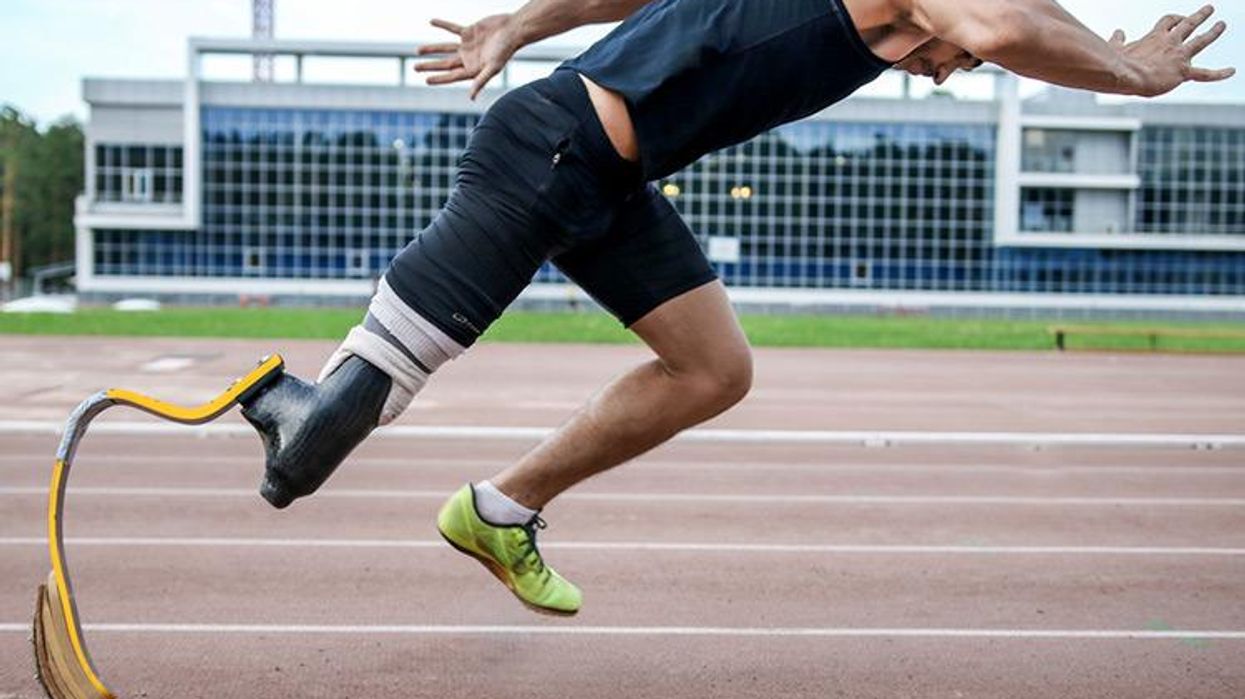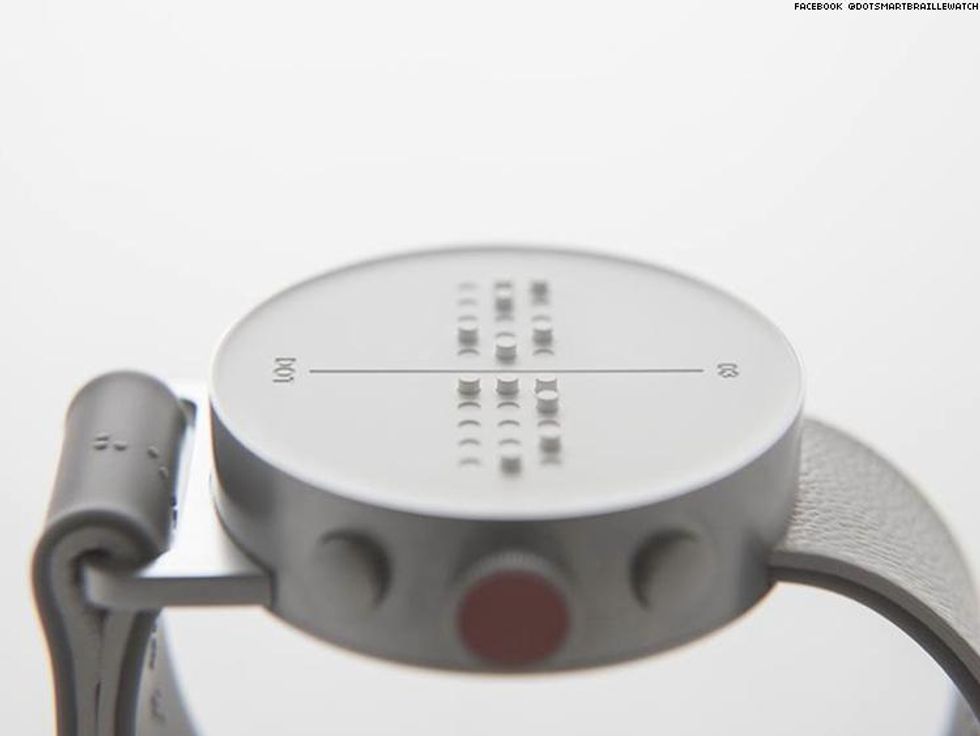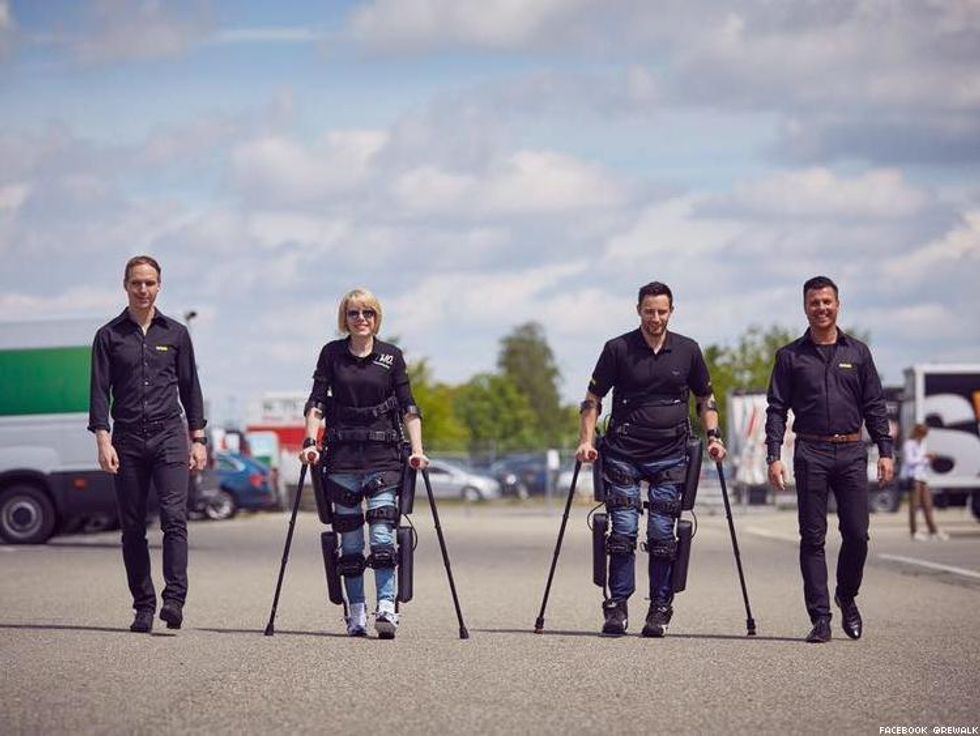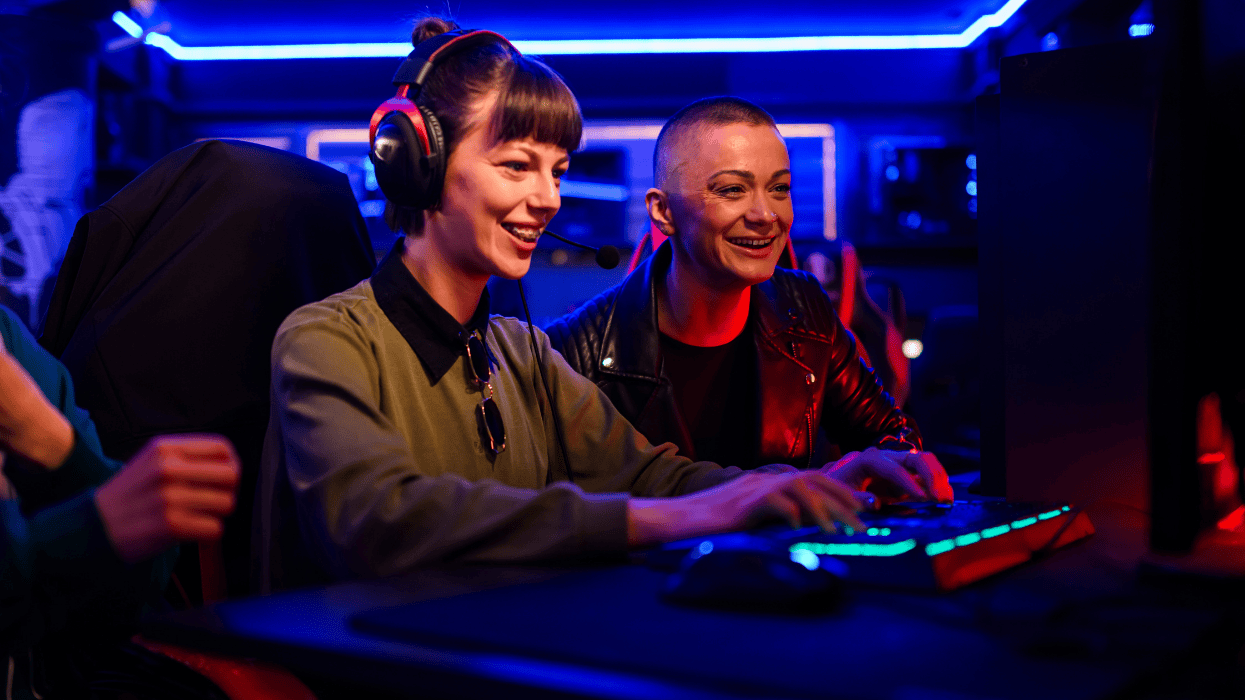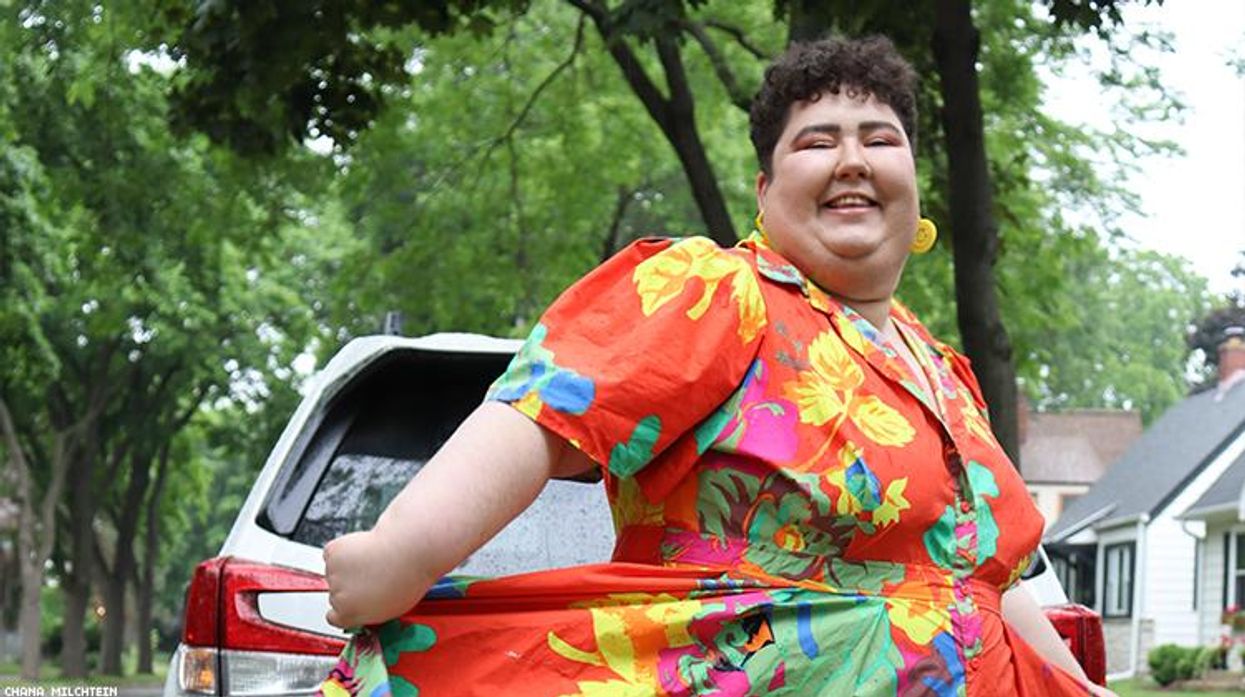As with any great community, the LGBTQ community is made stronger by our ability to gather together people from every walk of life, including disabled and non-disabled people. Advancements in technology are often catalysts for positive change.
From vaccines to computers, transportation to communication, technological innovations have brought efficiency, safety and connectivity to communities across the globe. But as with any such evolution, innovators need support as they continue to find ways to improve the lives of those around them.
The LGBTQ community benefits from tech innovations--whether it's allowing people to experience a Pride parade from their living room via virtual reality, or giving them the chance to monitor their health using the latest in healthcare applications, we're a community that knows how to leverage tech to better ourselves and each other.
Here are some of the most inspiring tech advancements improving the lives of people with disabilities.
FingerReader
In April 2015, a group of MIT students published a paper titled "FingerReader: A Wearable Device to Explore Printed Text on the Go." Their goal was to create a reading experience for visually impaired people that was similar to reading without visual impairment, where users could point to the words they wanted to hear and control their experience.
Like reading a menu, not everyone reads everything from beginning to end. FingerReader would allow users to select what text they wanted to consume, and when. The device (which seems to still be in prototype phase) attaches to the user's finger, scanning printed text with a small camera and reading it back electronically.
"The idea of what we're trying to do is that you can always trust the device to say the word that is in front of your fingertip," said Roy Shilkrot, concept developer for FingerReader. "The camera sits on the finger, but does not touch the page. That's how it gets such a wide view of what's there. It tracks the fingertip and it tracks the words on the page. It gives you audio cues to feel where the print is and it tries to infer the next word to say."
While not yet available to the public, the technology and innovative thinking behind FingerReader is sure to influence the future of visually impaired reading accessibility, especially in our world of e-readers and tablet screens.
Dot Smartwatch
In development since 2014, the Dot has finally started shipping this year, combining smartwatch technology with braille accessibility. The South Korean company went through multiple iterations of the device before landing on the current model, but its launch marks the beginning of many future possibilities for digital braille technology. In fact, Dot is working with Google on development of a Dot Pad, a braille e-reader planned for 2018.
In its current iteration, the Dot can tell the date and time, and can sync with a smartphone to alert wearers of messages, calls and notifications through the Dot Watch App.
While the Dot has limitations (it only displays four characters at a time, for instance), the concept could have a lasting impact for visually impaired people. There's already talk about how to incorporate "smart braille" technology into public infrastructure, like transit systems and buildings.
Liftware Level
Cerebral palsy, Parkinson's disease, spinal cord injury, Huntington's disease and post-stroke deficits can all lead to limited arm and hand mobility, often characterized by tremors. These tremors make fine motor functions difficult, including holding food utensils. That's where the Liftware Level comes in.
The device detects three-dimensional motion, keeping the attached utensil level, avoiding spills and making meals more accessible. With a rechargeable battery, interchangeable utensil attachments and its advanced stabilization technology, the Liftware Level is changing how many people approach the seemingly simple task of mealtime.
ReWalk Exoskeleton
Now in its sixth generation, the ReWalk Exoskeleton gives wheelchair users and people with paraplegia the ability to walk.
The bionic technology was developed by Israeli engineer Amit Goffer. By 2014, the ReWalk technology was approved by the United States Food and Drug Administration. The custom-fit exoskeletons can be outfitted for personal use (they can even climb stairs), or for rehabilitation purposes, with an emphasis on training exercises and therapy.
While still very expensive and not currently covered by health insurance in the U.S., ReWalk technology offers unprecedented opportunities for mobile impaired people. As with most tech advancements, future iterations are sure to be smaller and more cost-effective.
The LGBTQ community should continue to look to these innovations for inspiration. There's so much more communities can do to improve the lives of others, and technology is just one piece of the larger solution. Education, acceptance, equality and empowerment are goals to strive for--if tech can help, continued innovations are a must.


